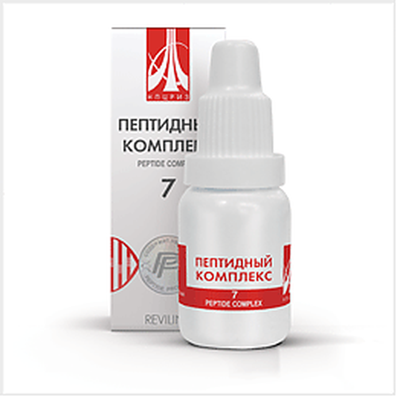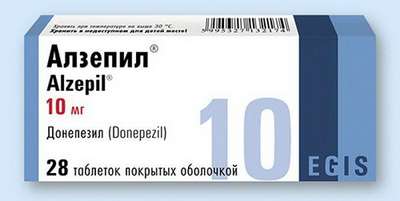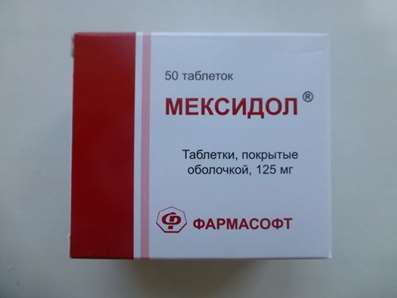Instruction for use: Voluven
I want this, give me price
Dosage form: Solution for infusions
Active substance: Amylum hydroxyaethylicum
ATX
B05AA07 Hydroxyethyl starch
Pharmacological group
Plasma-replacing agent [Substitutes for plasma and other blood components]
The nosological classification (ICD-10)
A41.9 Septicemia, unspecified: Septic diseases; Septicemia / bacteremia; Toxico-infectious shock; Endotoxin shock; Bacterial septicemia; Bacterial infections of severe course; Generalized infections; Generalized systemic infections; Infections generalized; Wound sepsis; Septiccopymia; Septic-toxic complications; Septicemia; Septic conditions; Septic shock; Septic condition; Septic shock
E27.2 Addison's crisis: Acute adrenal insufficiency; adrenal crisis; Sympathetic-adrenal crises; Acute adrenal insufficiency; Acute adrenocortical insufficiency; Addisonizm
E86 Decreased fluid volume [hypovolaemia]: Water deficit recovery; Indemnification of isotonic deficiency of water; Compensation for isotonic sodium deficiency; Compensation BCC; Replenishment of water deficit with stored KShS; Replenishment of fluid volume; Replenishment of BCC; Replenishment of electrolytes with stored KHS; Hypovolemic conditions; Hypovolemic condition; Hypovolemia; Hypotonic form of hypohydration; Hypochloremia with dehydration; Dehydration of different origin; Dehydration in children; Substitution of plasma volume for blood loss in pediatrics; Substitution of plasma with its losses and burns; Isotonic dehydration; Isotonic form of hypohydration; Violation of the water-salt balance; Dehydration;Dehydration in acute intestinal infections; Acute hypovolemia; Loss of fluid in burns; Toxicosis with exsycosis
R55 Fainting [syncope] and collapse: Vasovagal syncope; Fainting; Fainting condition; Development of the collapse; Collapse; Collapse with Addison's Disease; Circulatory collapse; Fainted foxes; Fainting with heart disease; Fainting with exercise; Orthostatic hypotensive syncope
R57.1 Hypovolemic shock: Hypovolemic shock during surgery; Acute hypovolemia
R58 Bleeding, not elsewhere classified: Abdominal apoplexy; Hemorrhagia; Haemorrhage of the esophagus; Hemorrhage; Generalized bleeding; Diffuse bleeding; Diffuse bleeding; Prolonged bleeding; Blood loss; Blood loss during surgical interventions; Bleeding during surgery and in the postoperative period; Bleeding during labor; Bleeding and haemorrhage in hemophilia B; Bleeding from the gums; Bleeding intraoperative abdominal; Bleeding against a background of coumarin anticoagulants; Hepatic hepatitis; Bleeding in hemophilia A; Bleeding at hemophilia A; Bleeding with inhibitory forms of hemophilia A and B; Bleeding due to leukemia; Bleeding in patients with leukemia; Bleeding; Bleeding due to portal hypertension; Bleeding due to hyperfibrinolysis; Drug bleeding; Local bleeding; Local bleeding due to activation of fibrinolysis; Massive blood loss; Acute blood loss; Parenchymal hemorrhage; Hepatic bleeding; Postoperative hemorrhage; Kidney bleeding; Vascular-platelet hemostasis; Traumatic bleeding; Threatening bleeding; Chronic blood loss
T08 Fracture of spine, level unspecified: Fracture of spine; Compression fracture
T09.3 Trauma of spinal cord at unspecified level: Spinal trauma; Traumatic spinal cord injury
T14 Injury to unspecified site: Pain syndrome with trauma and after surgery; Injuries; Extensive trauma to the skin and soft tissues; Muscle and ligament injuries; Injuries; Fibroma traumatic; Acute sport injuries
T30 Thermal and chemical burns of unspecified site: Pain syndrome with burns; Pain in burns; Pain with burns; Sluggishly healing post-burn wounds; Deep burns with a wet scab; Deep burns with abundant compartments; Deep burn; Laser burn; Burn; Burn of rectum and perineum; Burn with mild exudation; Burn disease; Burn injury; Superficial burn; Superficial burn of I and II degree; Superficial skin burns; After-burn trophic ulcer and wound; Post-burn complication; Loss of fluid in burns; Sepsis burn; Thermal burns; Thermal skin lesions; Thermal burn; Trophic after-burn ulcers; Chemical burn; Surgical burn
T78.2 Anaphylactic shock, unspecified: Anaphylactic shock; Anaphylactoid reaction; Anaphylactoid shock; Anaphylactic shock; Anaphylactic reactions; Anaphylactic shock to drugs
Z100 * CLASS XXII Surgical practice: Abdominal surgery; adenomectomy; Amputation; Coronary angioplasty; Angioplasty of the carotid arteries; Antiseptic skin treatment for wounds; Antiseptic Hand; Appendectomy; atherectomy; Balloon coronary angioplasty; Vaginal hysterectomy; The coronary bypass; Interventions in the vagina and cervix; Interventions on the bladder; Intervention in the mouth; Restoration and reconstructive surgery; Hand hygiene of medical personnel; Gynecologic surgery; Gynecological intervention; Gynecological surgery; Hypovolemic shock during operations; Disinfection of purulent wounds; Disinfection of wounds edges; Diagnostic intervention; Diagnostic procedures; Cervical Diathermocoagulation; Long-surgery; Replacing the fistula catheters; Infection in orthopedic surgery; Artificial heart valve; cystectomy; Short-term outpatient surgery; Short-term operation; Short surgical procedures; Krikotireotomiya; Blood loss during surgery; Bleeding during surgery and in the postoperative period; Kuldotsentez; laser photocoagulation; laser coagulation; retinal laser coagulation; Laparoscopy; Laparoscopy in Gynecology; CSF fistula; Small gynecological operations; Small surgical procedures; Mastectomy and subsequent plastic; mediastinotomy; Microsurgical operations on the ear; Mukogingivalnye operation; suturing; Minor surgery; neurosurgical operation; Immobilization of the eyeball in ophthalmic surgery; testectomy; pancreatectomy; Perikardektomiya; The period of rehabilitation after surgery; The period of convalescence after surgery; Percutaneous transluminal coronary angioplasty; Pleural thoracentesis; Pneumonia postoperative and posttraumatic; Preparation for surgical procedures; Preparation for surgery; Preparation of the surgeon's hands before surgery; Preparation of the colon for surgical procedures; Postoperative aspiration pneumonia in neurosurgical and thoracic surgery; Postoperative nausea; Postoperative bleeding; postoperative granuloma; postoperative shock; The early postoperative period; myocardial revascularization; Radiectomy; gastric Resection; bowel resection; uterine Resection; liver Resection; enterectomy; Resection of part of the stomach; Reocclusion of the operated vessel; Bonding tissues during surgical procedures; Removal of sutures; Condition after eye surgery; Condition after surgery; Condition after surgery in the nasal cavity; Condition after gastrectomy; Status after resection of the small intestine; Condition after tonsillectomy; Condition after removal of the duodenum; Condition after phlebectomy; Vascular surgery; Splenectomy; Sterilization of surgical instruments; Sterilization of surgical instruments; sternotomy; Dental surgery; Dental intervention in periodontal tissues; strumectomy; Tonsillectomy; Thoracic surgery; Thoracic surgery; total gastrectomy; Transdermal intravascular coronary angioplasty; Transurethral resection; Turbinektomiya; Removal of a tooth; cataract surgery; Removal of cysts; tonsillectomy; Removal of fibroids; Removing the mobile primary teeth; Removing polyps; Removing broken tooth; Removal of the uterus body; Removal of sutures; Fistula likvoroprovodyaschih ways; Frontoetmoidogaymorotomiya; Surgical infection; Surgical treatment of chronic limb ulcers; Surgery; The surgery in the anal area; The surgery on the colon; Surgical practice; The surgical procedure; Surgical interventions; Surgery on the gastrointestinal tract; Surgical procedures on the urinary tract; Surgical procedures on the urinary system; Surgical intervention of the genitourinary system; Surgical procedures on the heart; Surgical manipulation; surgery; Surgery on the veins; Surgical intervention; Vascular surgery; Surgical treatment of thrombosis; Surgery; cholecystectomy; Partial gastric resection; hysterectomy; Percutaneous transluminal coronary angioplasty; Percutaneous transluminal angioplasty; Coronary artery bypass; tooth Extirpation; Extirpation of milk teeth; pulpectomy; pulsative cardiopulmonary bypass; tooth Extraction; teeth Extraction; cataract extraction; Electrocoagulation; endourological intervention; episiotomy; Etmoidotomiya; Complications after tooth extraction
Composition
Solution for infusion - 1000 ml
Active substances: Poly (O-2-hydroxyethyl) starch 60 g
(The degree of molar substitution is 0.4, the average molecular weight is 130,000 Da)
Sodium chloride 9 g
Auxiliary substances: sodium hydroxide (for pH correction) - q.s .; Hydrochloric acid (for pH correction) - q.s .; Water for injection - up to 1000 ml
Electrolytes: Na + - 154 mmol / l; Cl- - 154 mmol / l
Indicators: theoretical osmolarity - 308 mosmol / l; Titrated acidity - less than 1 mmol NaOH / l; PH 4-5.5.
Pharmachologic effect
Mode of action - Plasma-substituting.
Dosing and Administration
IV (in the form of infusion).
The duration of application of hydroxyethyl starch should be limited to the initial phase of replenishment of the bcc and should not exceed 24 hours.
The first 10-20 ml of infusion should be administered slowly, with careful monitoring of the patient's condition in order to early detection of possible anaphylactic / anaphylactoid reactions.
The daily dose and speed of infusion depend on the degree of blood loss, maintenance or recovery of hemodynamics and hemodilution (dilution effect).
The maximum daily dose of the drug Voluven is 30 ml / kg.
The lowest effective dose of the drug should be used. Treatment should be accompanied by continuous monitoring of hemodynamics, and when the necessary result is achieved, infusion should be discontinued. Do not exceed the recommended maximum daily dose.
The experience of medical use in children is limited, and therefore the use of hydroxyethyl starch in this age group is not recommended.
Release form
Solution for infusions, 6%. In the polyolefin container (bag) "friffex®", consisting of two bags - the primary, with a solution of the preparation made from a special polymer and equipped with two ports, and an outer, made of a polymer film, 250 or 500 ml. 15, 20 or 30 containers in a cardboard box (for hospitals).
In a plastic bottle, equipped with a loop-holder for a dropper, sealed with a combined plastic proprietary lid "spike-shape", 500 ml. 10 or 20 bottles in a carton box (for hospitals).
Manufacturer
"Fresenius Kabi Deutschland GmbH". D-61346, Germany, Bad Homburg v.H.
The address of the place of production: 61169, Friedberg, Germany.
The address of LLC Fresenius Kabi: 125167, Moscow.
Conditions of supply of pharmacies
For hospitals.
Storage conditions of the drug Voluven
In the dark place at a temperature of no higher than 25 ° C (do not freeze).
Keep out of the reach of children.
The shelf life of the drug Voluven
Solution for infusions 6% - 5 years.
Do not use beyond the expiration date printed on the package.

 Cart
Cart





